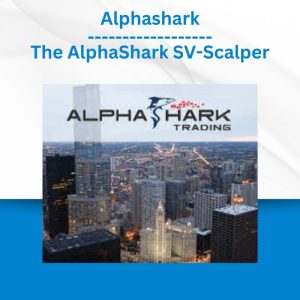*** Proof of Product ***
Exploring the Essential Features of “Joseph LaVacca – The Answer to Chronic Pain: Looking Just Beneath the Surface – PESI”
Speaker: Joseph LaVacca, PT, DPT, OCS
Duration: 1 Hour 57 Minutes
Format: Audio and Video
Copyright: Jul 30, 2020
Media Type: Digital Seminar
Description
Improve your treatment of chronic pain by examining the growing importance and understanding of superficial connective tissues and the role it plays in movement and pain. Understanding etiology, assessment, and diagnosis will allow the clinician to make improved decisions when dealing with patients with cutaneous nerve entrapment syndromes. Explore the usage of MSK ultrasound and the benefits of it.
Speaker
Joseph LaVacca, PT, DPT, OCS
Joseph LaVacca, PT, DPT, OCS, has been practicing physical therapy in New York City since 2010. He is the owner and founder of Strength in Motion Physical Therapy, where his passion lies in helping individuals with chronic pain rediscover themselves and their joy in both movement and life. Joe also holds advanced certifications in Orthopedics and movement screen utilization for the FMS/SFMA and functional range systems. Joe also prides himself on being a functional strength and mobility coach, while also having the opportunity to educate clinicians throughout the country and the world on topics such as building therapeutic alliance through the art of communication, understanding pain, treatment of lower extremity dysfunction and gait assessment, the clinical applications of CBD and breathwork interventions, as well as kinesiology taping and instrument assisted soft tissue mobilization.
Speaker Disclosures:
Financial: Joseph LaVacca is the owner and physical therapist of Strength in Motion Physical Therapy. He has employment relationships with Fringe, Inc, RockTape, and Force Couple LLC. Joseph LaVacca receives a speaking honorarium and recording royalties from PESI, Inc.
Non-financial: Joseph LaVacca has no relevant non-financial relationships.
Objectives
- Determine the differences between fascial layers and their importance
- Distinguish the differences in fascial receptors including free nerve endings, pacinian corpuscles, and Ruffini’s and their role on the CNS
- Employ MSK ultrasound to guide diagnosis and treatment decisions
Outline
Fascial Layers
- Superficial and deep fascia
- Impact and role on the CNS and movement dysfunction
Differences in Fascial Receptors
- Free nerve endings
- Pacinian
- Ruffini nerve endings
- Impact and role on the CNS and movement dysfunction
Using Musculoskeletal Ultrasound to Guide Diagnosis and Treatment Decisions
- MSK ultrasound
- Usage and implementation of MSK in your practice
- Case studies: anterior cutaneious nerve entrapments, cluneal nerves, and median nerve
Target Audience
- Physical Therapists
- Physical Therapy Assistants
- Occupational Therapists
- Occupational Therapy Assistants
- Athletic Trainer
Please see the full list of alternative group-buy courses available here: https://lunacourse.com/shop/










 Matan Feldman - The 13-Week Cash Flow Modeling - Wall Street Prep
Matan Feldman - The 13-Week Cash Flow Modeling - Wall Street Prep  Money Miracle - George Angell - Use Other Peoples Money To Make You Rich
Money Miracle - George Angell - Use Other Peoples Money To Make You Rich  Dave Landry - Stock Selection Course
Dave Landry - Stock Selection Course  The Daily Traders – Exclusive Trading Mentorship Group
The Daily Traders – Exclusive Trading Mentorship Group  Fred Haug - Virtual Wholesaling Simplified
Fred Haug - Virtual Wholesaling Simplified  Chris Capre - Advanced Price Action Ongoing Training & Webinars
Chris Capre - Advanced Price Action Ongoing Training & Webinars  Team NFT Money - Ultimate NFT Playbook
Team NFT Money - Ultimate NFT Playbook  Julie Stoian & Cathy Olson - Launch Gorgeous - Funnel Gorgeous Bundle
Julie Stoian & Cathy Olson - Launch Gorgeous - Funnel Gorgeous Bundle  Sovereign Man Confidential - Renunciation Video
Sovereign Man Confidential - Renunciation Video  Atlas API Training - API 570 Exam Prep Training Course
Atlas API Training - API 570 Exam Prep Training Course  George Fontanills & Tom Gentile - Optionetics 6 DVD Series Home Study Course (Digital Download)
George Fontanills & Tom Gentile - Optionetics 6 DVD Series Home Study Course (Digital Download)  Simpler Trading - Bruce Marshall - The Options Defense Course
Simpler Trading - Bruce Marshall - The Options Defense Course  Toshko Raychev - Profit System + ITF Assistant
Toshko Raychev - Profit System + ITF Assistant  Emanuele Bonanni - My Trading Way
Emanuele Bonanni - My Trading Way  Akil Stokes & Jason Graystone - TierOneTrading - Trading Edge 2019
Akil Stokes & Jason Graystone - TierOneTrading - Trading Edge 2019  Crypto Dan - The Crypto Investing Blueprint To Financial Freedom By 2025
Crypto Dan - The Crypto Investing Blueprint To Financial Freedom By 2025